Exploring Tokyo's Architectural Marvels with Loris

Embarking on a journey to discover the aesthetic wonders of Tokyo's museums, we teamed up with Japan-based content creator Loris for a captivating tour to see the architectural beauty found in the city.
Morning: Ueno's Cultural Oasis
Our adventure commenced in Ueno, a district steeped in history and home to a collection of renowned museums and art institutions. We delved into four architectural masterpieces that showcase the intersection of tradition and modernity.
The National Museum of Western Art

An architectural gem designed by the visionary Le Corbusier; this World Cultural Heritage-listed Museum recently underwent to renovate the forecourt and restore Le Corbusier’s original expressive intent.. Rodin's iconic sculptures grace the forecourt, adding a touch of timeless elegance to the surroundings.


《The Thinker (Enlarged)》
1881-82 (model), 1902-03 (enlarged), 1926 (cast)
bronze
The National Museum of Western Art Matsukata Collection
photo:©Norihiro Ueno

The National Museum of Western Art
- Place
- 7-7 Ueno Park, Taito-ku, Tokyo 110-0007, Japan
- Access
- JR Yamanote Line, 1 minute from Ueno Station, Park Exit
Keisei Line, 7minutes from Keisei Ueno Station
Ginza or Hibiya Subway Lines, 8 minutes from Ueno Station - Link
- https://www.nmwa.go.jp/en/
Tokyo National Museum – Gallery of Horyuji Treasures

Our journey led us to the Gallery of Horyuji Treasures, a tribute to the world’s oldest wooden building, Horyuji Temple. Designed by the eminent architect Taniguchi Yoshio, this gallery stands as a testament to the seamless fusion of ancient artifacts and modern architecture.

As we approached, Loris astutely pointed out the asymmetrical design, showcasing traditional Japanese beauty through modern lenses. The contrasting sizes of the ponds added an intriguing layer, harmonizing the modern structure with traditional Japanese aesthetic values.

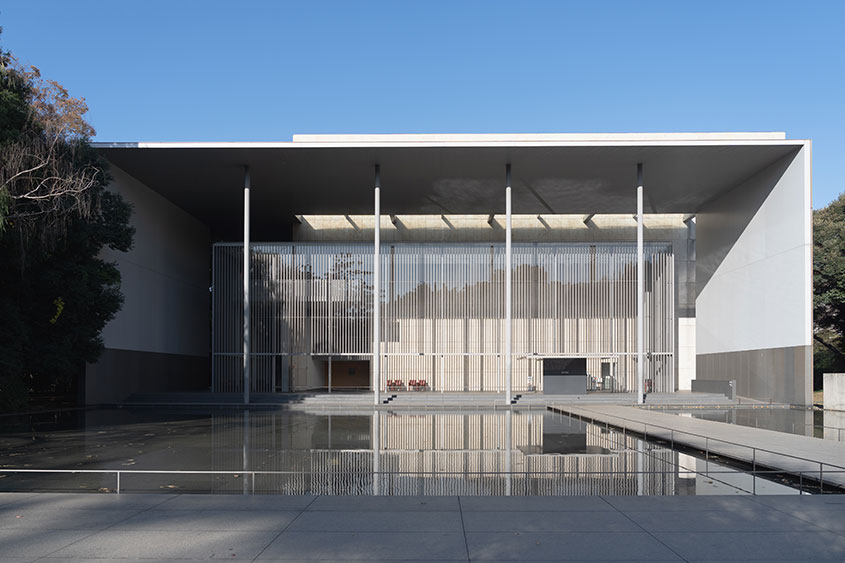
Tokyo National Museum – Gallery of Horyuji Treasures
- Place
- 13-9 Ueno Park, Taito-ku, Tokyo 110-8712, Japan
- Access
- 10-minute walk from JR Ueno or Uguisudani Station (JR Line)
15-minute walk from Ueno Station (Tokyo Metro Ginza Line/Hibiya Line)
15-minute walk from Nezu Station (Tokyo Metro Chiyoda Line)
15-minute walk from Keisei Ueno Station (Keisei Line)
National Museum of Nature and Science, Tokyo

Filled with captivating exhibits of plesiosaur replicas to Japan’s advances in science and technology, the National Museum of Nature and Science boasts a facade that is itself a marvel of early 20th-century modern architecture. With its dignified Neo-Renaissance style, the building resembles an airplane when viewed from above.


Loris appreciated the grandeur of the Neo-Renaissance design, the scratch-tiled exterior from 1931, and the airplane-shaped structure that captivates from a bird's eye view. His attention was also drawn to the intricate stained glass pattern depicting what seemed to be a phoenix. The phoenix, a mythical bird with origins in Chinese legends, has been cherished in Japan for centuries as a symbol of auspiciousness. This subtle incorporation of the phoenix motif exemplifies a harmonious blend of Western and Japanese elements within the museum's aesthetic. The use of stained glass, a serene dome, and the incorporation of natural light showcases the museum's commitment to creating a captivating atmosphere.


Additionally, the building uses Jurassic marble slabs, and upon closer inspection, ammonites are visible, adding an extra layer of intrigue to its architectural splendor.

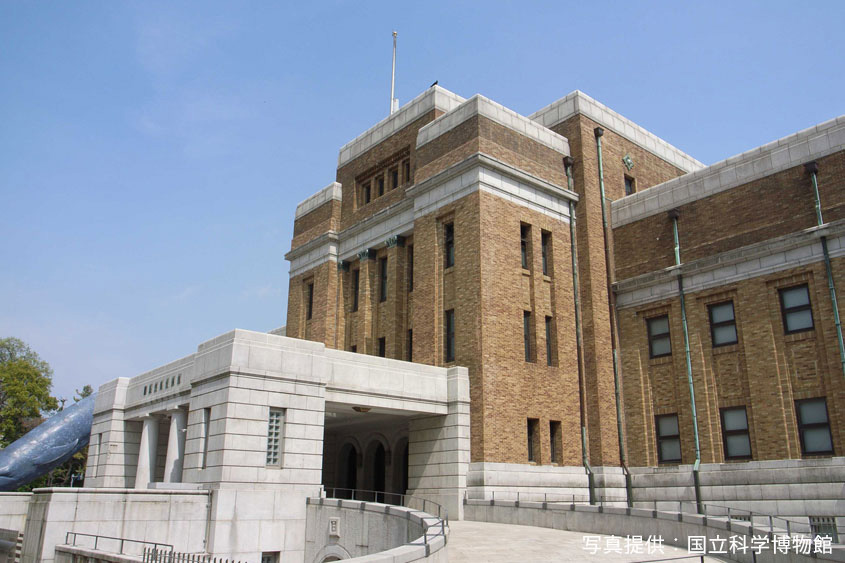
National Museum of Nature and Science, Tokyo
- Place
- 7-20 Ueno Park, Taito-ku, Tokyo 110-8718
- Access
- 5-minute walk from JR Ueno Station Park Exit (JR Line)
10-minute walk from Ueno Station (Tokyo Metro Ginza Line/Hibiya Line)
10-minute walk from Keisei Ueno Station (Keisei Line)
We have neither parking area for cars nor bicycles
Tokyo Bunka Kaikan

This concert hall designed by Kunio Maekawa showcases his signature use of color and a starry sky-like ceiling.

The National Museum of Western Art and Tokyo Bunka Kaikan, situated side by side, share an equal height.
Loris didn't just stop there; he also expressed admiration for the seamless harmony in design between Tokyo Bunka Kaikan and the Park Exit of Ueno Station. It's worth noting that both the Tokyo Bunka Kaikan and the station building were thoughtfully designed with a forest-inspired concept.

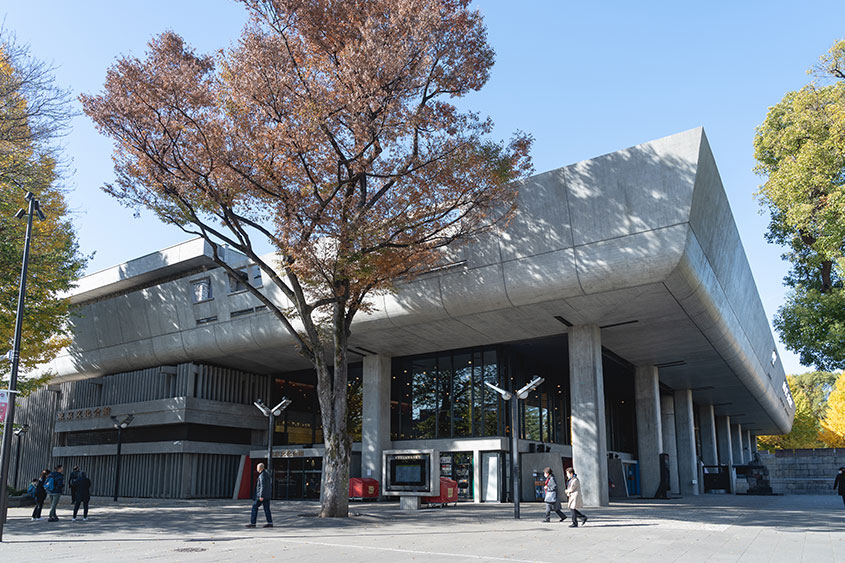
Tokyo Bunka Kaikan
- Place
- 5-45 Ueno Koen, Taito-ku, Tokyo 110-8716, Japan
- Access
- 1-minute walk from JR Ueno Station Park Exit (JR Line)
7-minute walk from Keisei Ueno Station (Keisei Line)
8-minute walk from Ueno Station (Tokyo Metro Ginza Line/Hibiya Line) - Link
- https://www.t-bunka.jp/en/
Lunch Time: Ginza's Timeless Treasures
After the tour around Ueno, we changed locations to the heart of sophistication, Ginza, Tokyo's upscale district renowned for its timeless treasures.
Beer Hall Lion Ginza 7-Chome

For a historical lunch experience, we visited the oldest beer hall in Japan, now officially recognized as a Tangible Cultural Property.


Loris appreciated the meticulous design and historical preservation, saying, "The fusion of red tiles, mosaic murals, and thematic chandeliers creates a timeless atmosphere."

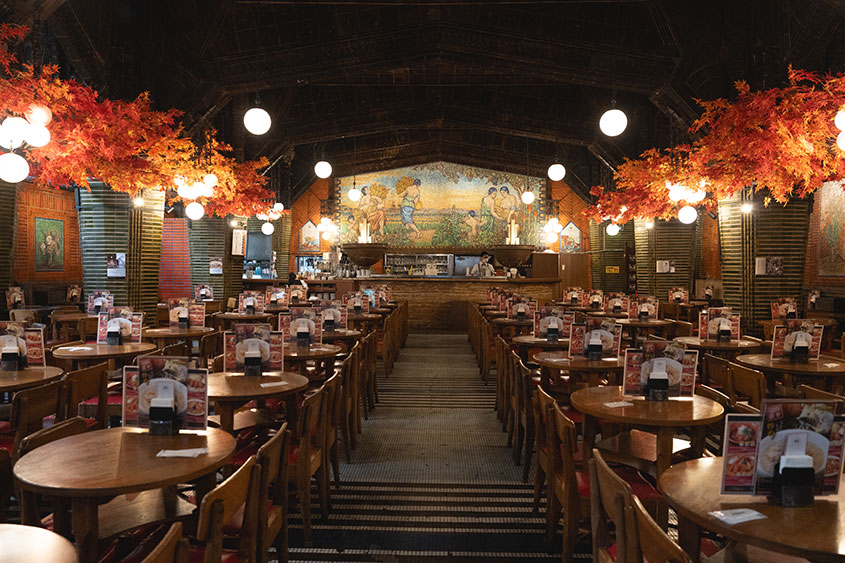
Beer Hall Lion Ginza 7-Chome
- Place
- Ginza Lion Building 1F 7-9-20 Ginza, Chuo-ku, Tokyo
- Access
- 3-minute walk from Ginza Station (Tokyo Metro Ginza Line)
7-minute walk from Yurakucho Station (JR Line)
7-minute walk from Shimbashi Station (JR Line) - Link
- https://www.ginzalion.jp/shop/brand/lion/shop1.html
Kabukiza Theatre

Our next stop is the Kabukiza Theatre, the only theatre in the world solely dedicated to kabuki. First built in 1889, it has undergone four phases of reconstruction and is currently in its fifth iteration, each marking a significant chapter in its history and cultural significance.


Loris commented on the intriguing historical evolution of the building, noting its initial Western appearance. The transition to a Japanese architectural style in the exterior was notably influenced by the opening of the Imperial Theatre, known for staging musicals and operas in a Western-style setting. He emphasized that the reconstruction to the purely Japanese palatial style not only embraced the essence of Japanese culture but also harmonized seamlessly with the offerings of the place. This transformation ultimately shaped the iconic look we now associate with the Kabukiza Theatre.

The Goemon staircase, connecting the rooftop garden to the fourth-floor corridor, provides an opportunity for a detailed examination of the roof tiles. If you take a closer look, you'll be able to spot a unique phoenix tile that is reversed!
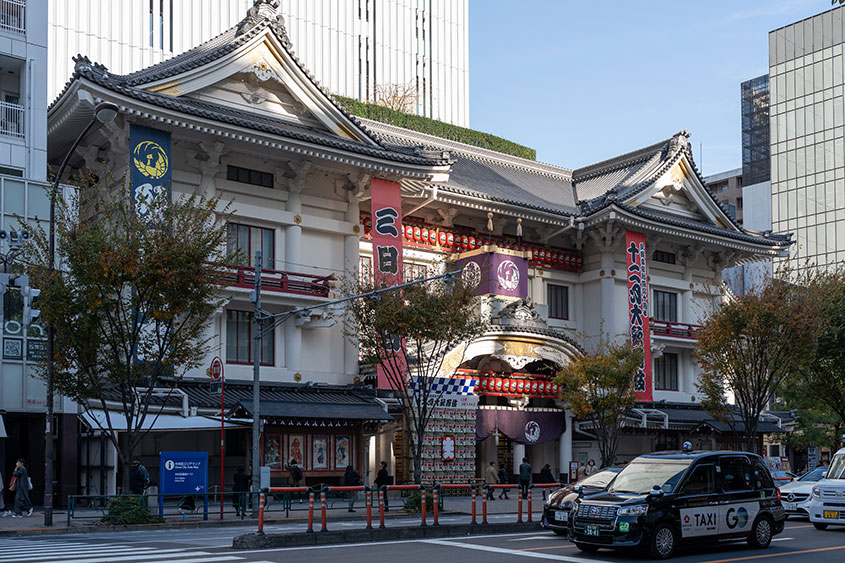
Kabukiza Theatre
- Place
- Ginza 4-12-15, Chuo-ku, Tokyo 104-0061 Japan
- Access
- Direct access from Higashi Ginza Station, Exit 3 (Tokyo Metro Hibiya Line/Toei Subway Asakusa Line)
5-minute walk from Ginza Station Exit A6 (Tokyo Metro Ginza/Marunouchi/Hibiya Line)
10-minute taxi ride from Tokyo Station (JR Line/Tokyo Metro) - Link
- https://www.kabukiweb.net/theatres/kabukiza/
Afternoon: Roppongi’s Modern Marvels
As the sun sets over Tokyo, our exploration of architectural wonders shifts to Roppongi, a district boasting modern marvels.
National Art Center, Tokyo

The National Art Center, a beacon of artistic innovation in Roppongi, captivates visitors with its iconic architecture. Using NACT’s architecture guide web application, CONIC, we embarked on an architecture tour, marveling at the glass curtain wall on the south side and the expansive lobby serving as a public space for open-air exhibitions.

Designed by renowned architect Kisho Kurokawa, the building's distinctive cone-shaped entrance immediately draws attention.

The lobby houses two colossal concrete structures known as the 'Cones,' strategically positioned to allow unobstructed views between the upper and lower floors. With an inverted cone shape, the design ensures both a spacious dining area and an open, airy lobby, while Kurokawa's innovative use of floor-based air circulation reflects a thoughtful approach to creating an optimal exhibition environment.

Visitors can choose from four distinct dining options, each offering delightful cuisine, captivating views, and charming interiors.

Notably, Loris praised the NACT for its inclusive accessibility, highlighting its open invitation to everyone. While featuring special exhibitions, the NACT ensures its luxurious facility is freely accessible to visitors, with free entry to the building. Loris often took moments to pause, camera in hand, capturing scenes that showcased the NACT's picturesque charm from every conceivable angle, both inside and out.


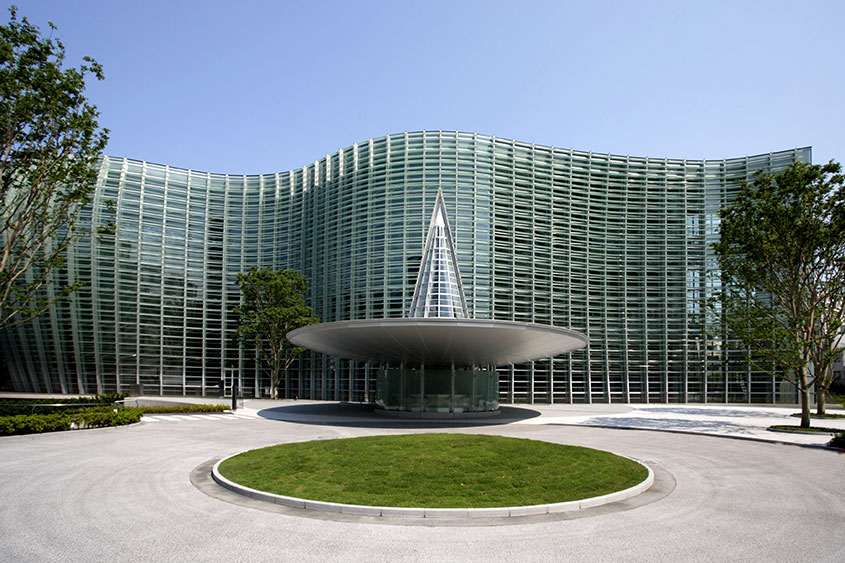
National Art Center, Tokyo
- Place
- 7-22-2 Roppongi, Minato-ku, Tokyo 106-8558 Japan
- Access
- Direct access from Nogizaka Station Exit 6 (Tokyo Metro Chiyoda Line)
5-minute walk from Roppongi Station Exit 4A (Tokyo Metro Hibiya Line)
4-minute walk from Roppongi Station Exit 7 (Toei Oedo Subway Line)
21_21 DESIGN SIGHT

Concluding our Roppongi adventure, we visited 21_21 DESIGN SIGHT, an innovative design institution. A short walk from the National Art Center, this venue showcases the creative fusion of design and architectural brilliance, further emphasizing Tokyo's commitment to innovation.

The building is a low-rise structure consisting of one ground floor and one underground floor. Most of the volume of the building, which has a unique form featuring a roof made from giant steel plates that slope gently down to the ground, is buried underground. Once inside, the space opens out on a scale unimaginable given the building's unobtrusive exterior. The ground floor houses Gallery 3 and shop space, while the underground floor houses two galleries and a naturally lit sunken court. The building was designed by architect Tadao Ando.
Highlighting Issey Miyake's concept in clothing design of "A Piece of Cloth," Ando devised the idea for the roof as one sheet of folded steel. In addition to the roof, the building incorporates Japan's world-leading technology, such as the longest sheet of double-glazed glass in Japan.

Reflecting on our exploration of Tokyo's architectural wonders, we discovered a harmonious blend of tradition and contemporary design, creating an unforgettable tapestry of cultural richness and artistic excellence.
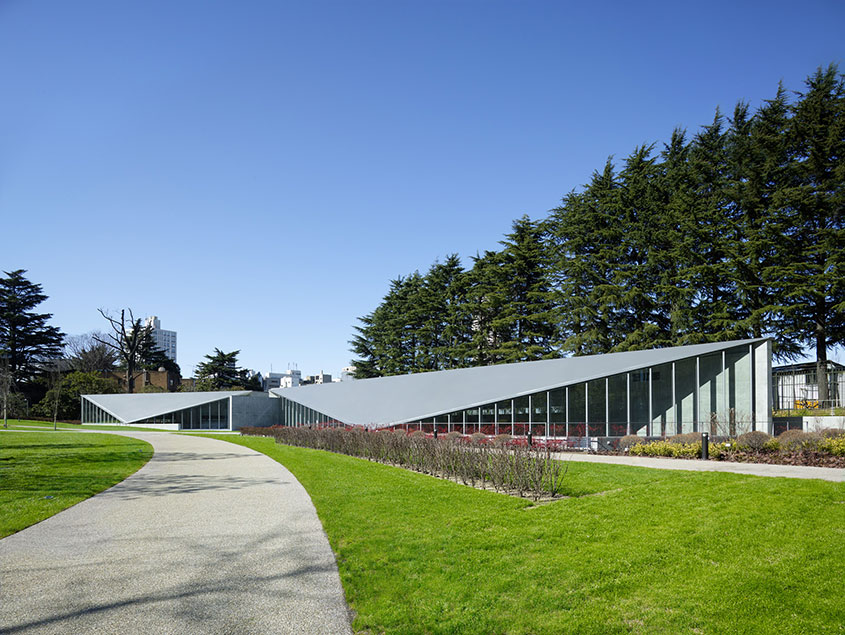
21_21 DESIGN SIGHT
- Place
- 9-7-6 Akasaka, Minato-ku, Tokyo 107-0052 Japan
- Access
- 5-minute walk from Roppongi Station (Toei Oedo Line / Tokyo Metro Hibiya Line)
5-minute walk from Nogizaka Station (Tokyo Metro Chiyoda Line) - Link
- https://www.2121designsight.jp/en/
